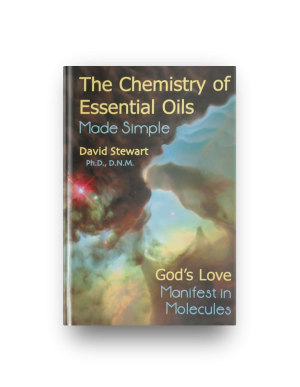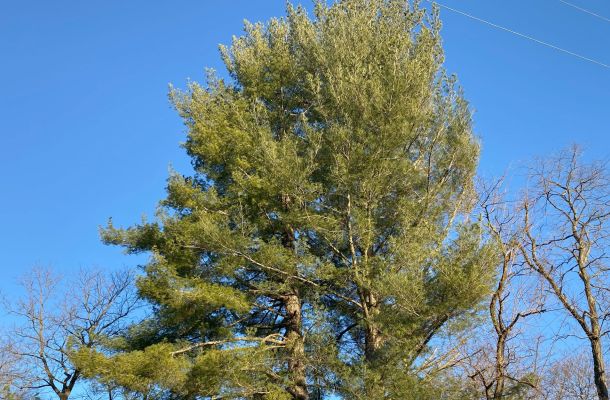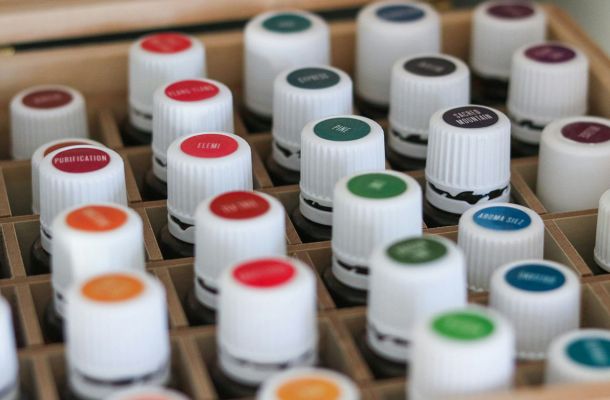Can Oils & Drugs be Used Safely at the Same Time? – Volume 9, Number 1
Please feel free to share this newsletter!

Raindrop Messenger
Official Newsletter of CARE
The Center for Aromatherapy Research and Education
12923 BCR 800, Marble Hill, Missouri USA 63764
(573) 238-4846
NOTE: The information in this newsletter is intended for education purposes only. It is not provided in order to diagnose, prescribe, or treat any disease, illness, or injured condition of the body or mind. Anyone suffering from any disease, illness, or injury should consult with a physician or other appropriate licensed health care professional.
Can Oils & Drugs be Used Safely at the Same Time?
Originally Posted January – February 2011
1. Can Oils & Drugs be Used Safely at the Same Time?
~^~ by David Stewart, PhD, DNM
A common question that I receive is whether or not essential oils can interfere or have adverse reactions with a prescription drug. In other words, if you are taking pharmaceuticals on the advice of a doctor, is it safe to use essential oils by any means (topically, orally, or by inhalation), at the same time as the drugs or not?
I researched essential oil/drug interactions thoroughly when I was writing my Chemistry Book and was unable to find a single citation or publication that indicated any adverse reactions between drugs and essential oils anywhere. If there is a problem between oils and pharmaceuticals, it must not be a serious one since no medical reference I checked referred to the topic. There were some precautions about over-using essential oils by themselves, but I found no publication, by a health care authority who uses both oils and prescriptions drugs, that mentioned any such problems.
I have heard verbal statements by uninformed doctors that there may be some adverse reactions between drugs and oils, but they cite no studies or evidence for their opinions. From my research I have not come across any problems between prescriptions and essential oils anywhere in print. This is not to say that adverse interactions between oils and drugs don’t exist. It could be that, at this time, such occurrences may have just gone unreported. All I can say is that after a thorough search I could not find any reports of such reactions.
A review of the medical literature pertinent to this topic is found in Chapter Eleven of my Chemistry Book. Twenty-nine references were reviewed including works by medical doctors, pharmacists, registered nurses, and others. These included the following: “Medical Aromatherapy” by Kurt Schnaubelt, PhD; “The Merck Manual of Diagnosis and Therapy” edited by Mark Beers, MD, and Robert Berkow, MD; “L’Aromatherapie Exactement” by Pierre Franchomme, PhD, & Daniel Penoel, MD; “The Practice of Aromatherapy” by Jean Valnet, MD; “Clinical Aromatherapy: Essential Oils in Practice” by Jane Buckle, RN, PhD; “Freedom Through Health” by Terry Friedmann, MD; “Pharmacognosy and Pharmacobiotechnology” by James Robbers, PhD, Marilyn Speedie, PhD, and Varro Tyler, PhD, Sc.D.; “Clinical Aromatherapy for Pregnancy and Childbirth” by Denise Tiran, RN; ; “Physicians Desk Reference (PDR) for Herbal Medicine,” edited by Thomas Fleming, PharmD, Joerg Gruenwald, PhD, and Christof Jaenicke, MD; and many others.
Editor’s Note: David Stewart’s book, “The Chemistry of Essential Oils Made Simple” subtitled, “God’s Love Manifest in Molecules,” 848 pages, hardcover, $49.95 plus s&h, is available at the CARE Website, www.RaindropTraining.com.
~^~^~^~^~^~^~^~^~^~^~^~^~^~^~
2. Lavender: An Oil for All Purposes
~^~ by Greg Hitter, PhD
It might be a good time to stock up on lavender oil. Gary Young reported in his December conference call that half the French lavender harvest is dead, and it likely will take eight years to come back. Gary noted that the Growers Association reported that the price of lavender was up 30% already in 2010. And it will get much more expensive over the next few years as demand increases and the supply becomes more unavailable.
Of course we expect lavindin and linalool to be used even more to “cut” lavender now. The market will be further glutted with so-called “lavender” that doesn’t have the expected effect–thus giving a bad name to oils — even more than lavender oil has already been corrupted and slandered!.
It’s a shame that this has occurred. Apparently 5 years of drought combined with a year of record rain in France led to conditions for a “mutating virus” to devastate the French lavender fields of Provence.
THE AMAZING VERSATILITY OF LAVENDER
Fortunately Gary Young had the foresight to grow lavender in Utah on the YL Farm. So we have a supply for a few years. But with demand increasing, the price will climb considerably within Young Living.
Lavender is a “universal oil” that can be used for restoring balance to nearly every type of body-mind condition. The phrase “when in doubt use lavender” is a truism often acted upon in the YL oils community.
From my background as a psychotherapist and a psychologist, I have found lavender to be particularly useful in affecting the limbic system–the area of the brain where traumatic emotion is stored, and from which the rest of the body-mind is modulated.
The limbic system’s traumatic store of negative experience is central to the “cell memory” and “dis-ease” programmed into all the other body-mind systems (hormonal, cardiovascular, immune, digestive, hepatic, muscular-skeletal, etc.). Lavender is a great tool in our natural arsenal to counter traumatic cell memory and its negative effects on the body and mind.
For example, I’ve found lavender more useful than the Peace & Calming oil blend (or other typically-recommended essential oils or blends) for alleviating muscle cramps when inhaled through the nose (rather than applied on the site of the spasming muscle). Inhaling lavender this way (through the nose) goes directly to the limbic system, where modulating effects on muscle (tension) occurs. Try it yourself the next time you’re awakened by leg cramps and can’t sleep, or after a chill, tiredness, or overactivity leads to cramping!
In general, I’ve found lavender especially good for restoring balance to the autonomic nervous system and its two subsystems, the sympathetic and parasympathetic nervous systems, which often go askew under trauma, usually resulting in serious mind-body problems.
Lavender’s ability to reduce inflammation is also well known & researched, which speaks to its universal ability to influence all body-mind systems, much like the other great anti-inflammatory, frankincense, which has long been used in Europe for decreasing inflammation in cancer cases and other diseases. Dr. Suhail, MD, our frankincense distiller from Oman, spoke about the anti-inflammatory effects of frankincense at the Young Living Convention in Salt Lake City this last Fall. Like lavender, I consider frankincense to be a universal oil, able to bring balance to most any unbalance. So lavender, like frankincense, is a potent anti-inflammatory.
Lavender is often also very effective for anxiety, depression, and emotional imbalance, being found in many of the blends targeting the brain, emotion, and the psyche. YL blends containing lavender include: Brain Power, Awaken, Dragon Time, Egyptian Gold, Envision, Estro Tincture, Forgiveness, Gathering, Gentle Baby, Harmony, Highest Potential, Motivation, M-Grain, R.C., SARA, Surrender, Trauma Life).
Because of its “universal” nature, positively effecting all systems of the body-mind, lavender is a great stress buster! It’s effects on restoring immune function (because of its stress-busting ability) are usually under-appreciated. We’ve become so overwhelmed and conditioned by stress in our lives that we are largely unconscious of stress and its bad effects. And so stress, in all its dimensions, largely goes unrecognized.
To” wake up and smell the lavender” is to take a big step toward wellbeing! What a great way to start your day, every day!
The destruction of the French lavender market is indeed a serious blow to all of us who now may have to do without, pay more, or purchase poor-quality, ineffectual, and thus “false” lavender oil. It’s a good time to stock up on “old reliable,” Young Living lavender, before the price increases.
Editor’s Note: Greg Hitter, PhD, is a Silver Young Living distributo and a clinical psychologist who has used essential oils in his practice for many years. He is author of the book, “Butterflies in a Bottle,” available from www.YL Wisdom.com. He has gives personal growth seminars and can be contacted in the following ways: (805) 781-0309, Selfquesting@cs.com, or www.selfquesting.com
~^~^~^~^~^~^~^~^~^~^~^~^~^~^~
3. CARE Classes Save Lives and Build Successful YL Businesses
~^~ By Karen Hopkins, CI
Editor’s Note: Karen is a Young Living Distributor from Bartlesville, Oklahoma, who took her first CARE Training in November 2007. She has since retaken the CARE training three times and brought a dozen or more members of her downline for the training each time. After her first CARE Intensive she applied what she learned to build a large, Young Living downline and, within a year, had reached the rank of Silver. She has taught her downline to do the same, applying CARE Teachings to build a Young Living business, and the next year Karen had several Silver distributors in her group and was, herself, a Gold.
She now has more Silver Distributors, all built by CARE Principles, and will soon be Platinum. She already has the six legs in place that she needs who will reach Silver and she expects to reach Diamond by the end of 2011. She attributes her outstanding success to the knowledge and skills she and her downline acquired by attending CARE Intensives and applying what they learned to building their business.
Meanwhile, during the same time, Karen coauthored and published a book entitled, “Nutrition 101,” 446 pages, beautifully illustrated in full color and is a virtual encyclopedia. It contains the equivalent of several books and is available from CARE at www.RaindropTraining.com. It is a perfect text for home schoolers as well as an invaluable reference for anyone.
Simultaneously, Karen has also been working to become a Certified CARE Instructor (CCI). She is presently a CARE Intern (CI) and will complete the certification process with her first CARE Class she will teach in Tulsa, Oklahoma, March 24-27, 2011.
So, with that introduction, here is Karen’s testimony to CARE:
“I cannot tell you how grateful I am, to the Lord and to you, David and Lee, for the help you have given us through CARE Classes. I know that the Lord supernaturally led us to you and that he used your knowledge to help save our daughter’s life when she got spinal meningitis a few months after my first CARE Intensive in Feb. 2007.
“I remembered that you said something like “If you don’t know what oil to use, then use Frankincense. The Egyptians used it from head-to-toe and everything in between.”
“When my daughter, Hannah, woke up screaming with severe head pain one night, I remembered what you said and grabbed the Frankincense and started pouring it all over her head. I had 4 bottles of Frankincense from a YL promotion the past Christmas; buy 1 Frankincense get 1 free. I used three-and-a-half bottles during the next four days with two Raindrops daily. I believe that protocol and the knowledge I got from the CARE Intensive saved her life! I can not prove it, but one of these days I am going to write a book about it.
“She was 21 years old at the time and nine months earlier received the meningitis vaccine before going to Oral Roberts University (ORU) because they required the shot for entrance. When taking the vaccine, they told her that other immunizations were given wrong on her past record and they convinced her to receive four vaccinations at that time. She passed out at the doctor’s office hitting her head on a counter shelf receiving a concussion. Three months later she got food poisoning from the college dorm cafeteria and five months later she came down with eight of the nine symptoms of spinal meningitis. I believe that DNA from the vaccine hibernated around her spine and probably became activated after her bout with the bacteria from the food poisoning.
“I did not take her to the emergency room until the third day after giving her that protocol of oils, which was Frankincense several times over her head and spine with two Raindrops daily. When they tested her, they said her white blood cell count was only slightly elevated. They told me that she was sick “because of stress” even though her temp registered 102 degrees.
“The ER doctor couldn’t explain how that could be. But in the next CARE Intensive that I took under you Dr. Stewart, you taught that Cypress helps the white blood cells and can stimulate their growth if that is what a person needs. The Lord instantly revealed to me that was why Hannah’s blood test did not reveal the “true” story going on in her body. Even though her temp was high, Cypress oil was taking over and fighting the meningitis bacteria. The white blood cells were probably resting and recovering from the fierce battle in her body. I was sprinkling Cypress on her back liberally twice a day from the Raindrop Technique and unknowingly giving her the oils that she exactly needed to overcome meningitis.
“Hannah is alive today because I attended your CARE Intensive! Max and I are praying that God will help us to do the same thing for other parents when we both become CARE Instructors and teach as a team. We are also praying for other couples to become involved with us in CARE, like you and Lee and like Bruce and Linda Dietler. Max has been called by the Lord to mentor men in the ministry and I believe that God is going to set him up as a mentor through Young Living and through CARE.
“We love you so much,”
Karen and Max Hopkins
Editor’s Note: CARE offers more than 150 seminars each year, mostly in the U.S. and Canada, but also in some other
~^~^~^~^~^~^~^~^~^~^~^~^~^~^~^~
4. Essential Oils as Snake Repellents
~^~ by David Stewart, PhD
“Snake Oil” is a term coined during pioneer days in the United States that became a synonym for fraud. Actually, “snake oil,” was a legitimate product sold by traveling salesmen throughout the frontier West as a first aid remedy for rattlesnake bites. Applying the oil on the site of the bite would react chemically with the venom and render it harmless. It worked. The essential oil was Tea Tree (Melaleuca alternafolia).
Unfortunately, not all salesmen were honest and some were selling just any old cheap oil in a bottle and calling it “snake oil.” When people discovered that it did not work, all snake oil salesmen were branded as untrustworthy. In the late 1900s and early 20th century, when it became known that some essential oils promoted as effective snake bite remedies did not work and had been sold by deception, drug companies spread another fraud, saying that natural remedies, in general, were unscientific and did not work, while the synthetic potions they manufactured were scientific and better.
Hence, even to this day those of us who promote natural remedies are sometimes called “snake oil salesmen” as a putdown for our practice and our products. You can read more about this in a past issue of the Raindrop Messenger, Vol 1, No 5, May-June 2003. All back issues of the Raindrop Messenger are archived at www.RaindropTraining.com.
This article, however, is about another application of essential oils to deal with poisonous snakes. Research has shown that cinnamon oil, and clove oil are effective snake repellents. Snakes will retreat when sprayed directly with these oils and will exit confined spaces when these oils are introduced to the area.
The deadly “brown tree snake” of the tropics does not reside in the United States (so far). However, there is a danger of live snakes being inadvertently imported into the country as uninvited stowaways in shipments to the U.S. from those countries. Snake-sniffing dogs have been used to detect their unwanted presence in cargo, but actually finding and removing them before shipment was still a challenge.
The U.S. Department of Agriculture (USDA) Animal and Plant Health Inspection Service (APHIS) have found that spraying or diffusing Cinnamon and/or Clove oil into a container will repel snakes and drive them out. It does not kill them, but just makes it unpleasant enough to force them to leave. Applying the oils in advance does not prevent snakes from crawling over those surfaces and entering hiding places that could pose hazards to humans. The oils must be applied directly to or in the vicinity of the snakes, themselves.
In the past, the USDA and APHIS had used various chemicals to drive the snakes out of cargo areas, chemicals such as toxic insecticides, fungicides, and rodenticides. But now they can get as good or better results with non-toxic essential oils like cinnamon or clove. When a brown snake emerges from a shipment, they can control its movements and facilitate its exodus by simply aiming a stream of spray from a bottle containing a mixture of 1% clove or cinnamon oil, with 1% sodium lauryl sulphate (as an emulsifier), and 98% water. The stream must hit the snake in the head to trigger escape behavior and effectively control its movements.
The APHIS brochure containing instructions to USDA agents for repelling snakes with oils says that “any commercially available brand” will do, but the cinnamon or clove oil must be at least 98% food grade to be effective. Apparently they don’t have to be “therapeutic grade.” The government brochure recommends several modes of application, including fumigation of closed spaces by blowing hot air over a saturated rag to volatilize the oil. The brochure cautions, “Use only unadulterated oils.”
So now even the U.S. Government applies a variety of “snake oils” for special purposes.
Editor’s Note: We want to thank Robert Krone for bringing this government publication to our attention. Bob is a Young Living Distributor living in Cape Girardeau, Missouri. He is a producer of films and DVDs.
THE RAINDROP MESSENGER
Official Newsletter of CARE
The Center for Aromatherapy Research and Education
12923 BCR 800, Marble Hill, Missouri USA 63764
(573) 238-4846
NOTE: The information in this newsletter is intended for education purposes only. It is not provided in order to diagnose, prescribe, or treat any disease, illness, or injured condition of the body or mind. Anyone suffering from any disease, illness, or injury should consult with a physician or other appropriate licensed health care professional.
The Care Calendar
Topics covered in the Raindrop Messenger:
- 10 Reasons to Learn Raindrop
- 3 1/2 Day Intensive
- 3 Day Intensive
- Acid Reflux
- Advanced Bible Oils
- Advanced Chemistry of Essential Oils
- Advanced Emotional Release
- AFNOR
- Allergy Season
- Allopathy
- ALOES/SANDALWOOD
- and Emotional Release
- Annual CCI Summit
- Anointing
- Anointing with Oil & Laying on of Hands
- Applied Vitaflex
- Aroma Life
- Aromatherapist
- Aromatherapy
- Aromatherapy Certification
- Arthritis
- Believer
- BIBLE OILS
- Biblical Oils
- Birch Oil
- Black Widow
- Blue Chamomile
- Blue Spruce
- Body Systems
- cancer
- CARE Chemistry
- CARE Classes
- CARE Instructors
- CARE INTENSIVES
- CARE Seminars
- CARE Summit 2025
- CARE training
- Carvacrol
- CCI Certification
- CCI Summit
- CCI Summit 2024
- CEDARWOOD
- Center for Aromatherapy Research and Education
- Chakras
- Charging for Raindrop
- Chemistry
- Chemistry 1&2
- Chemistry of Essential Oils
- Chemistry of Essential Oils Made Simple
- Chemotypes
- cleanses
- Clover
- Connection
- Continuing Education Credit
- CYPRESS
- Dangers Of Prescription Drugs
- Detoxifiers
- Developing Gratitude
- DI GIZE
- DIAMOND
- Do All You Can
- Earthquakes
- Education
- Elderberry
- ELECTROMAGNETIC FIELD
- EM FIELD
- Emotional Release
- Emotional Release with Oils
- Energize
- ENZYMES
- Essential Oils
- ESSENTIAL OILS FOR INTUITIVE PURPOSES
- Essiac tea
- Exodus Supplement
- Feelings Kit
- Flu
- Focus
- Frankincense
- FREQUENCES
- Full CARE Intensive: Raindrop
- GALBANUM
- Garlic
- Gary Young
- German Chamomile
- Ginger
- Goals
- god's love
- Gold Frankincense Myrrh
- Grand Fir
- Grapefruit
- Growth
- Habits
- Harmonies Melodies & Symphonies with Essential Oils
- Heal Your Body
- Healing
- Healing Oils Of The Bible
- Helichrysum
- HERXING
- History of Anointing Oils
- Holy Anointing Oil
- Holy Incense
- Homeopathy
- Homeostatic Intelligence
- HYSSOP
- IASP
- Institute for Energy Wellness Studies
- Integrated Aromatic Science Practitioner
- Joy
- Juniper
- laughter
- Lavender
- Lee Stewart
- Legal
- lemongrass
- linen
- Liver
- Look Ahead.
- Love
- Lyme Disease
- Mind-Body Connection
- Mint
- Myrrh
- Myrtle Oil
- NAT
- Natural
- Natural Molecules
- Neuro-Auricular Technique
- never give up
- new age
- Ningxia
- Ningxia Red
- Non-Nutritive
- Nova Vita
- Ocotea Oil
- Onycha
- ORAC SCALE
- Oregano
- Oregano oil
- Overcoming Diabetes
- patchouly
- Peruvian Chocolate
- Pest Control
- pheromones
- phosphoric acid
- Photoxicity
- Pine
- POO-ROMATHERAPY
- Practitioner
- Preparation
- Protocel
- Pure Therapeutic Grade Essential Oil
- Quantum Physics
- Raindrop
- Raindrop and Vitaflex Techniques
- Raindrop certification
- Raindrop instructors
- Raindrop Technique
- Raindrop Technique Training
- Raindrop Training
- Raindrop Without a License
- RC Blend
- Relationship
- ringing in the ears
- Rose Essential Oil
- ROSE OF SHARON/CISTUS
- Rose Oil
- Safe Insect Repellants
- scar-b-gone
- Science Of Essential Oils Made Simple
- Sensitivities to Essential Oils
- sick building syndrome
- SPIKENARD
- Stay Positive
- staying healthy
- Success
- Supervisor Training
- Synthetic Compounds
- tansy
- Tea Tree
- The Blood Brain Barrier
- the Ecuador Clinic
- THE FIRST IMPRESSION TECHNIQUE
- the Mind-Body Connection
- THE PRAYER OF JABEZ
- The Quantum Connection
- THE SLEEP TECHNIQUE
- Therapeutic Grade
- Thieves Household Cleaner
- Thieves Oil
- Thyme
- Thyme Oil
- Tinnitus
- Transformation
- Transformation Oil Blend
- Twelve Questions to Ask Those Who Invite You to Join Another Company
- unresolved emotions
- valor blend
- Vita Flex
- Vitaflex
- Vitaflex and Raindrop
- water
- Wealth and Spirituality
- Wintergreen
- Wolfberries
- Ylang Ylang
- YLEO
- Young Living business
- Young Living Essential Oils
- Young Living Oils and Products



